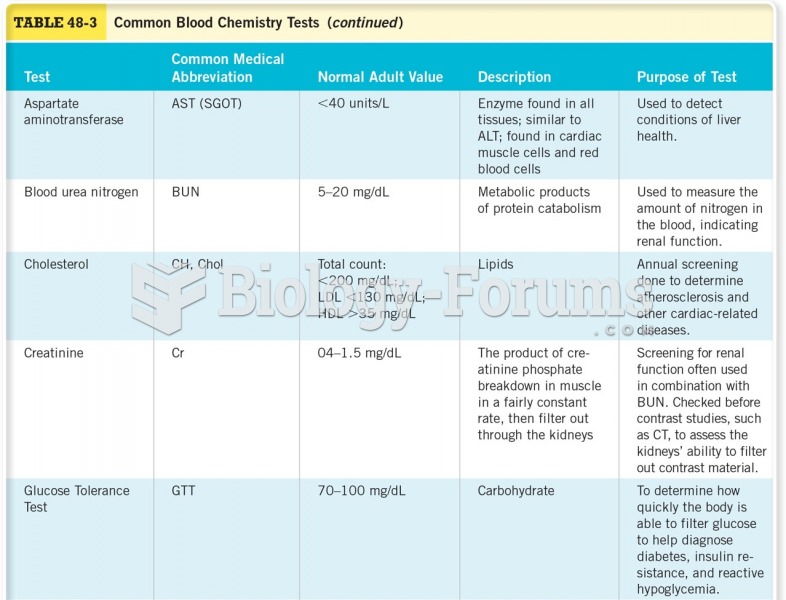|
|
|
Most fungi that pathogenically affect humans live in soil. If a person is not healthy, has an open wound, or is immunocompromised, a fungal infection can be very aggressive.
IgA antibodies protect body surfaces exposed to outside foreign substances. IgG antibodies are found in all body fluids. IgM antibodies are the first type of antibody made in response to an infection. IgE antibody levels are often high in people with allergies. IgD antibodies are found in tissues lining the abdomen and chest.
Approximately 25% of all reported medication errors result from some kind of name confusion.
This year, an estimated 1.4 million Americans will have a new or recurrent heart attack.
On average, someone in the United States has a stroke about every 40 seconds. This is about 795,000 people per year.







